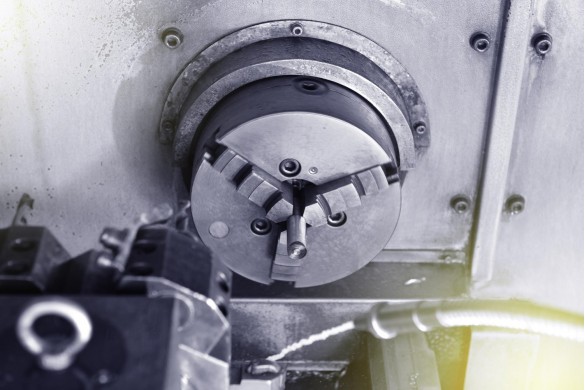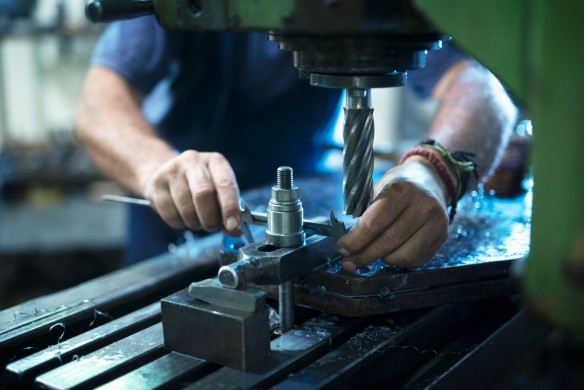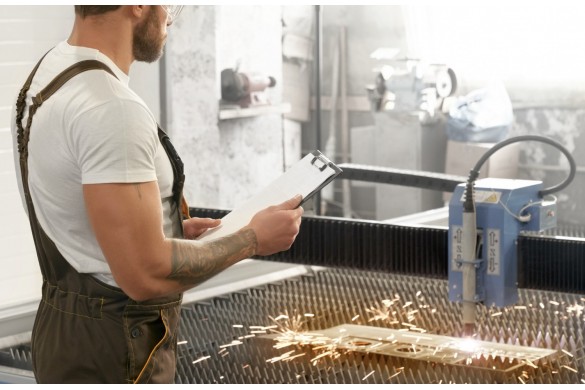What is machining and how does it work?

Are you wondering what machining is and how it works, as well as where it is applied? Machining is a process used in industry to process materials, in which the excess layer of material is removed using cutting tools such as milling cutters, drills, or cutting knives. It is one of the most commonly used production processes in many branches of industry, including the production of machine parts, tools, and structural components.
In this article:
- Introduction to machining
- What is machining?
- Types of machining
- Milling
- Turning
- Drilling
- How to choose machining parameters?
- Machines used in machining
- CNC machines
- Metal milling machines
- Metal lathes
- Applications of machining
- Advantages of machining
- Summary
Introduction to machining
Machining is one of the basic industrial processes, used for the production of precise machine and tool components. The process is based on removing material from the workpiece by cutting forces. Machining provides parts with high dimensional precision and surface smoothness.
Cormak – manufacturer of industrial machines offers advanced industrial machines that enable precise machining tailored to various production needs.
What is machining?
Machining involves removing excess material from the workpiece using cutting tools. The tool, operating at the right angle and speed, removes the layer of material and shapes the surface according to required dimensions. Machining is a highly precise process, allowing for very accurate parts with required tolerances.
Machining is usually carried out on machines that can work manually or automatically, such as CNC machines, which are fully automated and enable serial production.
Types of machining
Machining covers a variety of processes. The most common types are:
Milling
Milling involves removing material with a rotating milling cutter. It can be performed in different planes, and the rotating tool gradually removes the material. Milling is widely used to produce complex shapes such as grooves, holes, or threads.
Check available metal milling machines in the Cormak range.
Turning
Turning is a machining process in which the cutting tool, usually a lathe tool, moves along the rotating workpiece, removing excess material in the form of chips. Turning is ideal for cylindrical parts such as shafts or bushings. It is most often performed on metal lathes.
Drilling
Drilling is used to make holes in a workpiece. Drills rotating around their axis remove material axially. Drilling is one of the simplest yet most important machining processes, widely used in parts requiring precise holes.
How to choose machining parameters?
Choosing the right machining parameters is crucial for efficiency, product quality, and tool life. The main machining parameters are:
- Cutting speed – defines how fast the cutting tool moves relative to the material.
- Feed rate – the speed of tool movement along the workpiece.
- Depth of cut – how deep the tool enters the material.
- Rake angle – affects ease of cutting and surface finish.
Parameters should be matched to the material, the type of cutting tool, and the quality requirements of the machining.
Machines used in machining
Machining is carried out on different machines depending on the process. The most common metalworking machines include:
CNC machines
CNC machines are advanced computer-controlled devices that enable precise and fully automated machining. They guarantee repeatability and allow the production of complex shapes.
Metal milling machines
Metal milling machines allow precision milling operations. They are suitable for steel, aluminum, and plastics.
Metal lathes
Metal lathes are used for cylindrical parts such as shafts and bushings, ensuring high accuracy and efficiency.
Applications of machining
Machining is used in many industries, including:
- Automotive industry – production of shafts, pistons, engine housings.
- Aerospace industry – machining of aircraft structural parts.
- Machine industry – manufacturing of precise machine parts and tools.
Advantages of machining
- Precision – very accurate dimensions and smooth surfaces.
- Versatility – machining of metals and plastics.
- Efficiency – fast and cost-effective processes, especially with CNC machines.
Summary
Machining is a key industrial process for manufacturing precise machine and tool parts. With modern technologies such as CNC machining centers, high-quality products can be achieved. Proper parameter selection ensures the best machining results and production cost optimization.





